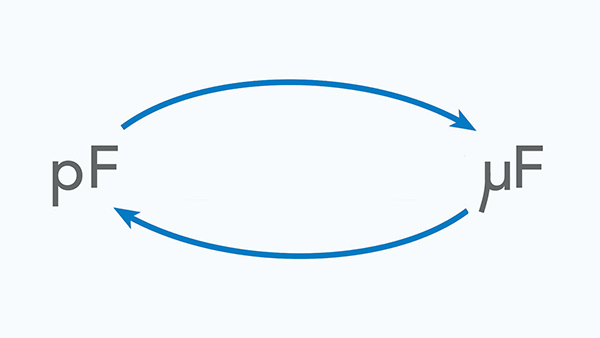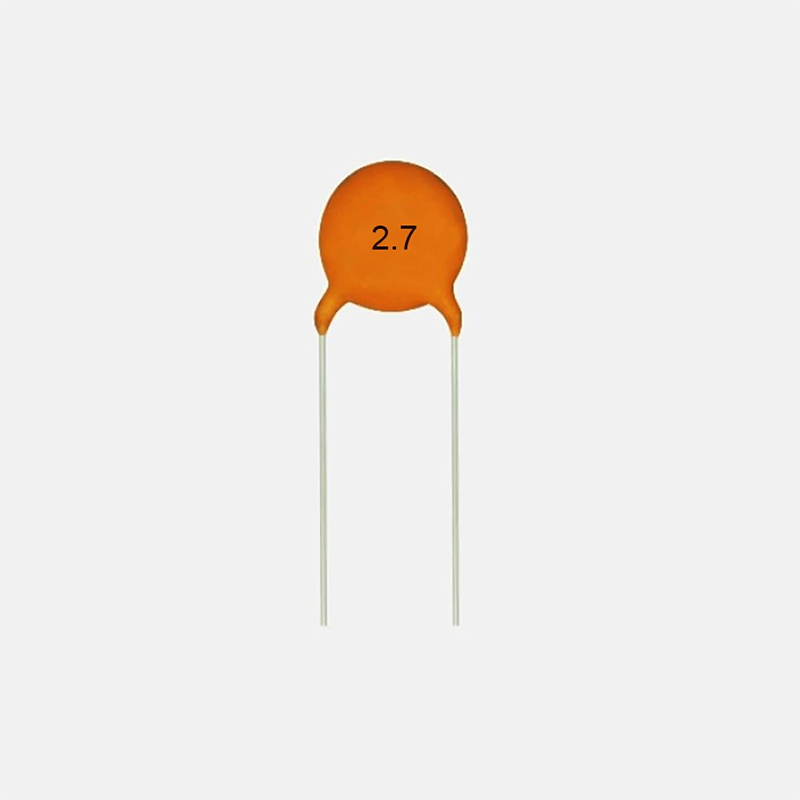How to convert PF to UF

Convert capacitance value in PF to nF(µF)
To convert picofarads (pF) to microfarads (µF), you can use the following conversion factor:
1 microfarad (µF) = 1000 picofarads (pF)
This means that one microfarad is equivalent to 1000 times the value in picofarads. To convert from pF to µF, divide the value in picofarads by 1000.
Here's an example:
Let's say you have a capacitor with a capacitance of 5000 picofarads. To convert this value to microfarads, divide it by 1000:
5000 pF / 1000 = 5 µF
So, 5000 picofarads is equal to 5 microfarads.
Remember that when performing conversions, it's important to keep track of units and make sure they cancel out correctly. In this case, dividing by 1000 cancels out the "picos" and leaves us with "micros."
Understanding Capacitance Units
Before diving into conversion methods, let's take a moment to understand what these units represent. Capacitance is the ability of a component or circuit to collect and store energy in an electric field. The standard unit for measuring capacitance is the farad (F), named after English scientist Michael Faraday.

2.7PF Capacitor
However, one farad is quite large when it comes to everyday electronic devices; hence we often use smaller units such as:
Microfarad (µF): One millionth (1/1,000,000) of a farad.
Picofarad (pF): One trillionth (1/1,000,000,000,000) of a farad.
These measurements are used regularly in electronic components like capacitors where storing electrical charge matters significantly.
What is picoFarad(pF)?
The picofarad (pF) is a unit of capacitance used to measure the amount of electrical charge a capacitor can store. It is equal to one trillionth (10-12) of a farad, which is the SI unit for capacitance.
To understand what this means, let's break it down:
The farad (F) is a large unit of capacitance. A capacitor with a capacitance of 1 farad can store one coulomb (C) of electric charge when charged with one volt (V).
The prefix "pico" denotes multiplication by 10-12. So, 1 picofarad represents one trillionth (or one millionth of a millionth) of a farad.
In mathematical terms, we can express the relationship between picofarads and farads as: 1 pF = 10-12 F.
In practical applications, capacitors with values in the range of picofarads are commonly used in electronic circuits. These small capacitors are effective at storing and releasing small amounts of charge and are often employed for filtering signals or providing coupling between different parts of an electronic circuit.
For example:
A typical ceramic capacitor might have a value like 100 pF.
An electrolytic capacitor could have values ranging from microfarads (μF), which are larger than picofarads but still smaller than farads, to several farads for specialized applications.
So when you encounter values expressed in picofarads (pF), remember that they represent very small capacitances commonly found in electronics.
What is microFarad?
The microfarad (µF) is a unit of capacitance used to measure the amount of electrical charge a capacitor can store. It is equal to one millionth (10-6) of a farad, which is the SI unit for capacitance.
To understand what this means, let's break it down:
The farad (F) is the base unit of capacitance. A capacitor with a capacitance of 1 farad can store one coulomb (C) of electric charge when charged with one volt (V).
The prefix "micro" denotes multiplication by 10-6. So, 1 microfarad represents one millionth of a farad.
In mathematical terms, we can express the relationship between microfarads and farads as: 1 µF = 10-6 F.
In practical applications, capacitors with values in the range of microfarads are commonly used in electronic circuits. These capacitors are effective at storing and releasing moderate amounts of charge and are often employed for filtering signals, coupling components together, or providing energy storage in various electronic devices.
For example:
Electrolytic capacitors often have values ranging from several microfarads up to thousands or even tens of thousands of microfarads.
Tantalum capacitors also commonly have values expressed in microfarads.
So when you encounter values expressed in microfarads (µF), remember that they represent moderate-sized capacitances typically found in electronics for various purposes such as energy storage and signal conditioning.
pF to uF(µF) conversion table
| Picofarads (pF) | Microfarads (µF) |
|---|
| 1 | 0.000001 |
| 10 | 0.00001 |
| 100 | 0.0001 |
| 1000 | 0.001 |
| 5000 | 0.005 |
| 10,000 | 0.01 |
| 50,000 | 0.05 |
| 100,000 | 0.1 |
| 500,000 | 0.5 |
| 1,000,000 | 1 |
| 2,000,000 | 2 |
| 5,000,000 | 5 |
FAQ
1. How to Convert 1000 pf to uf(µF)?
To convert 1000 picofarads (pF) to microfarads (µF), divide the value by 1,000,000. Thus, 1000 pF is equal to 0.001 µF.
2. How to Convert 100 pf to uf(µF)?
To convert 100 picofarads (pF) to microfarads (µF), divide the value by 1,000,000. Therefore, 100 pF is equal to 0.0001 µF.
3. How to Convert 10000 pf to uf(µF)?
To convert 10,000 picofarads (pF) to microfarads (µF), divide the value by 1,000,000. Therefore, 10,000 pF is equal to 0.01 µF.
4. How to Convert 4700 pf to uf(µF)?
To convert 4,700 picofarads (pF) to microfarads (µF), divide the value by 1,000,000. Therefore, 4,700 pF is equal to 0.0047 µF.
5. How to Convert 0.1 uf(µF) to pf?
To convert 0.1 microfarads (µF) to picofarads (pF), multiply the value by 1,000,000. Therefore, 0.1 µF is equal to 100,000 pF.
6. 0.01 uf to pf conversion
To convert 0.01 microfarads (µF) to picofarads (pF), multiply the value by 1,000,000. Therefore, 0.01 µF is equal to 10,000 pF.